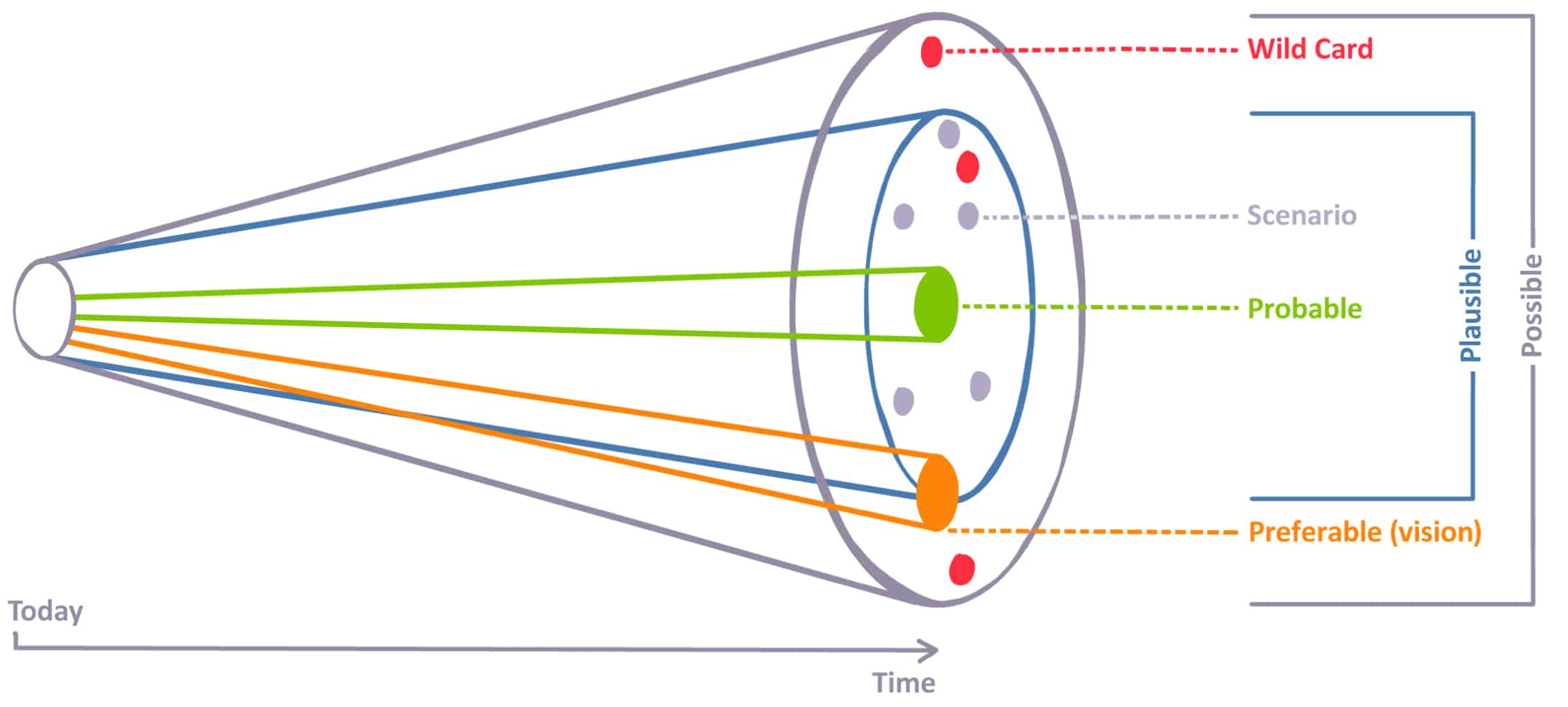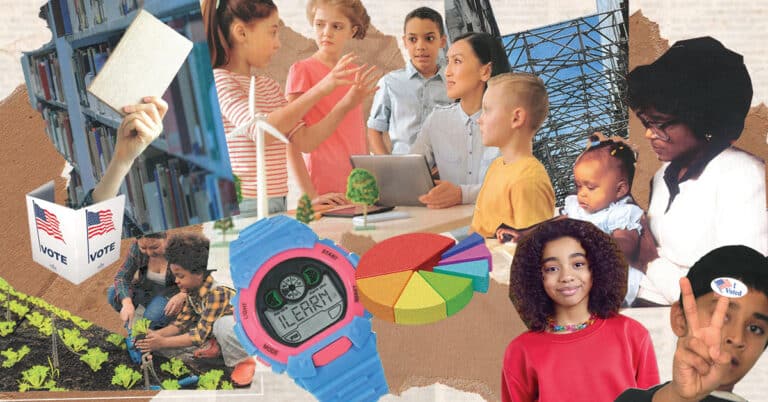The future has the potential to unfold in many ways and exploring those possibilities can be overwhelming. The cone of plausibility is one tool that can help guide those explorations. It was first created in 1988 to help explore geopolitical scenarios, but what makes this tool especially useful is that it can be used to explore a variety of topics, including the future of learning.

The future is not a fixed point, and in fact there are many types of futures. When we think about a range of futures, we can organize them into four categories:
- Plausible futures: Possibilities that could happen given the bounds of uncertainty
- Probable futures: Scenarios and possibilities that are likely to happen
- Possible futures: The widest range of scenarios, including all possibilities
- Preferred future: The vision we have for possibilities we want to see come true
Plausible and possible futures deal with inbound change. They are based on actions and causes that have already occurred. Preferable futures describe what we want to happen and how we are going to respond to inbound change. They are based on our values rather than our assumptions.
Thinking through multiple futures of learning is something KnowledgeWorks does regularly. That practice is essential for establishing a vision for a preferred future. Tools such as the cone of plausibility help us organize scenarios, discuss possibilities and establish a vision for what we want for the future of learning. KnowledgeWorks’ hope is learning will become human-centered as stakeholders work to transform education systems.







